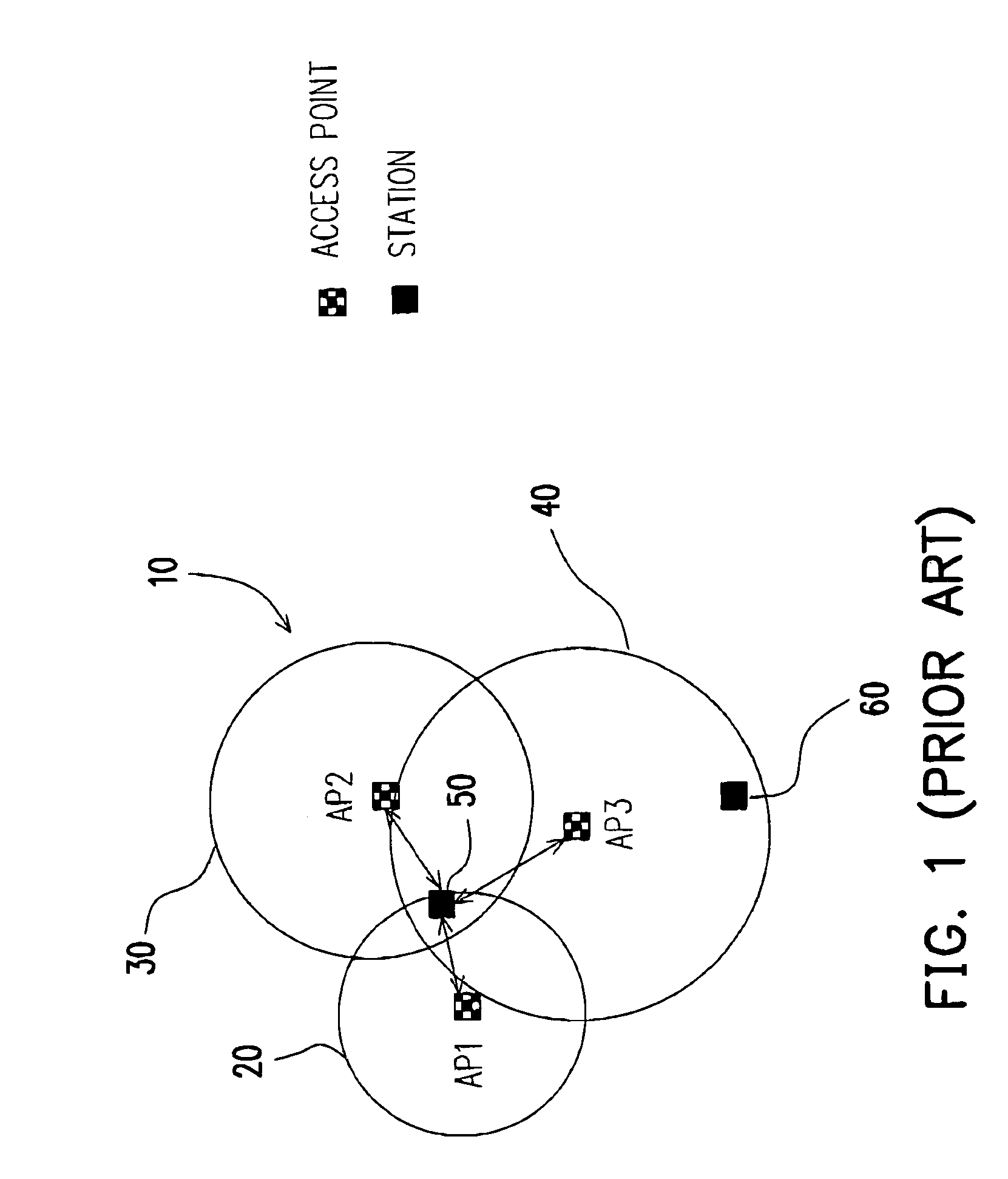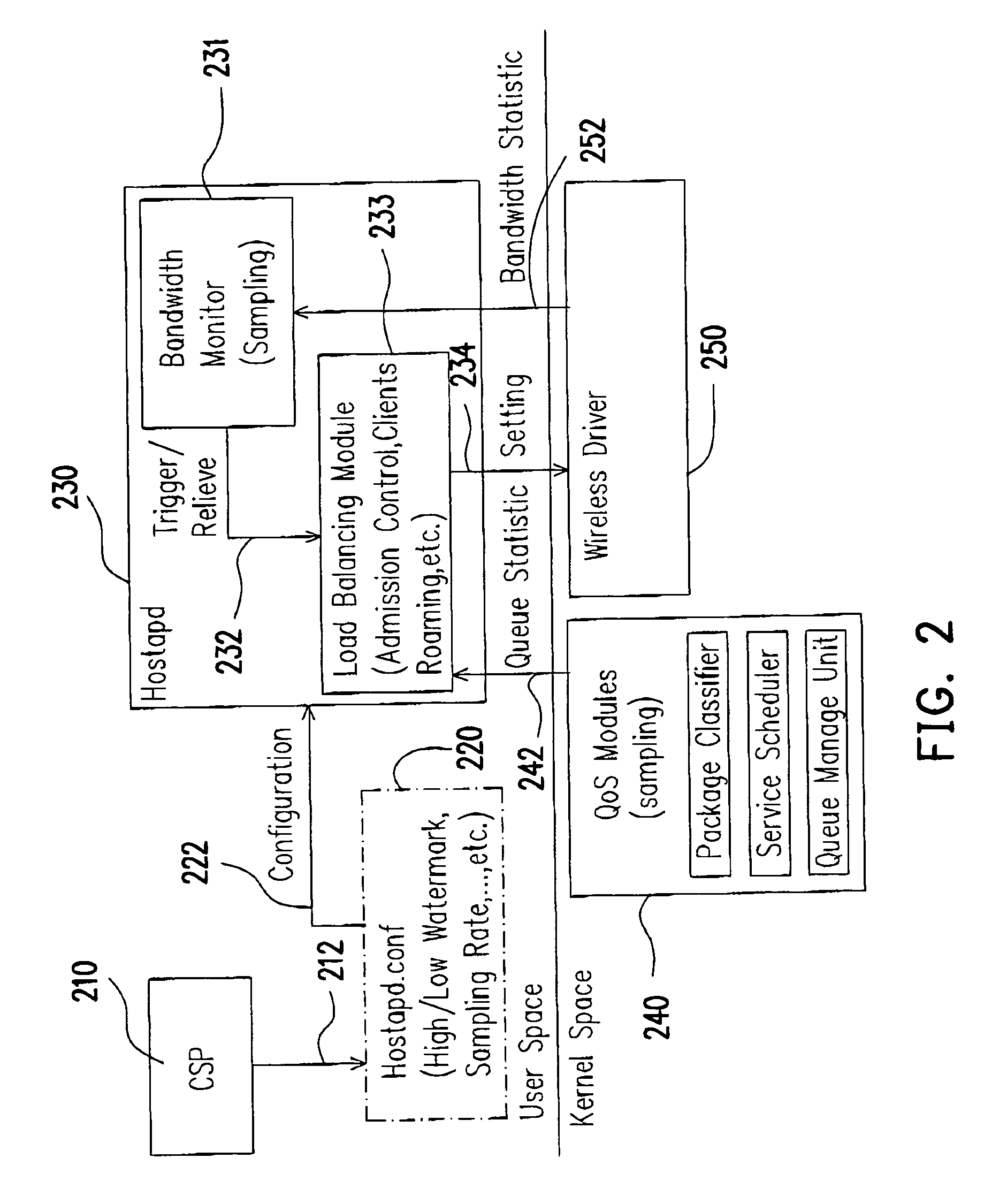QoS based load-balance policy for WLAN
- Summary
- Abstract
- Description
- Claims
- Application Information
AI Technical Summary
Benefits of technology
Problems solved by technology
Method used
Image
Examples
Embodiment Construction
[0042] Before describing the preferred embodiments of load-balancing method for this present invention, several terms are defined as follows:
[0043] Definition 1:
[0044] Reverse Roaming: A radio port disconnects a session during congestion period and the client is forced to re-associate with another radio port covering the same spatial region without interruption to service at high level.
[0045] Definition 2:
[0046] Constant-bit rate traffic: Traffics that need to be transmitted in a constant bandwidth in a time interval (for example voice and video).
[0047] Variable-bit rate traffic: Traffics that can be transmitted in a variable bandwidth over in a time interval.
[0048] Definition 3:
[0049] Congestion Level Indicator (CLI): a tuple of attributes used to indicate a level of congestion per SSID (Service Set IDentifier). A set of high and low watermarks associate with each attribute is stored in a Congestion Level Indicator. The number and types of attributes in the Congestion Level ...
PUM
 Login to View More
Login to View More Abstract
Description
Claims
Application Information
 Login to View More
Login to View More - R&D
- Intellectual Property
- Life Sciences
- Materials
- Tech Scout
- Unparalleled Data Quality
- Higher Quality Content
- 60% Fewer Hallucinations
Browse by: Latest US Patents, China's latest patents, Technical Efficacy Thesaurus, Application Domain, Technology Topic, Popular Technical Reports.
© 2025 PatSnap. All rights reserved.Legal|Privacy policy|Modern Slavery Act Transparency Statement|Sitemap|About US| Contact US: help@patsnap.com



